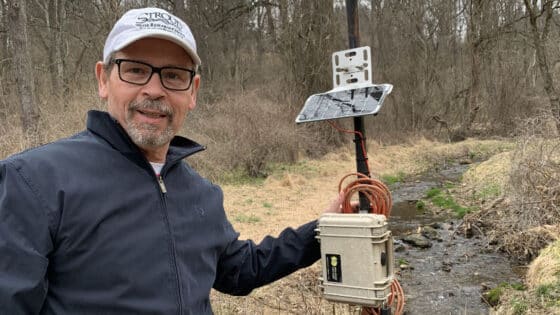Ensign, S.H., K. Siporin, M.F. Piehler, M.W. Doyle, and L. Leonard. 2012. Estuaries and Coasts 36(3):519–532.
doi: 10.1007/s12237-012-9491-1
Abstract
Tidal freshwater wetlands (TFW) alter nitrogen concentrations in river water, but the role of these processes on a river’s downstream nitrogen delivery is poorly understood. We examined spatial and temporal patterns in denitrification in TFW of four rivers in North Carolina, USA and evaluated the relative importance of denitrification rate and inundation on ecosystem-scale N2 efflux. An empirical model of TFW denitrification was developed to predict N2 efflux using a digital topographic model of the TFW, a time series of water level measurements, and a range of denitrification rates. Additionally, a magnitude-frequency analysis was performed to investigate the relative importance of storm events on decadal patterns in N2 efflux. Spatially, inundation patterns exerted more influence on N2 efflux than did the range of denitrification rate used. Temporal variability in N2 efflux was greatest in the lower half of the tidal rivers (near the saline estuary) where inundation dynamics exerted more influence on N2 efflux than denitrification rate. N2 efflux was highest in the upper half of the rivers following storm runoff, and under these conditions variation in denitrification rate had a larger effect on N2 efflux than variability in inundation. The frequency-magnitude analysis predicted that most N2 efflux occurred during low flow periods when tidal dynamics, not storm events, affected TFW inundation. Tidal hydrology and riparian topography are as important as denitrification rate in calculating nitrogen loss in TFW; we present a simple empirical model that links nitrogen transport in rivers with loss due to denitrification in TFW.


